The popularity of container gardening has increased throughout the years. Unlike a plant in the ground, parameters can be managed, reducing the risk of soil-borne diseases and chemicals. You’ll get flavorful, brilliant colour, plus the delight of growing and harvesting your flowers, herbs, or veggies. Let’s check out more information about Virginia container gardening below.
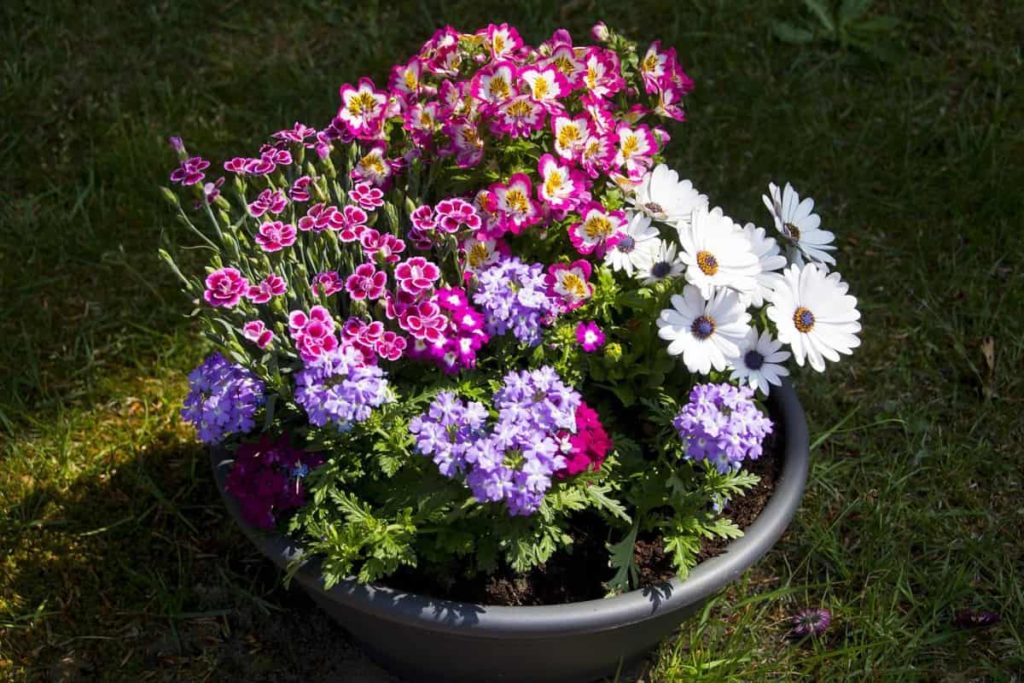
This region has three different growing seasons: spring, summer, and autumn. Changing seasons provide new opportunities for experimentation, such as testing out new ideas, plant pairings, and harvests. Consider your time before making a choice. If the answer is little, go slow. You might become overwhelmed by the scents, textures, and colours visiting your neighbourhood garden centre. As a result, begin modestly. It will help if you have a goal in mind.
This article gives information about Virginia’s indoor and outdoor potted plants, provides details about southern and northern Virginia gardening, how to start a container garden in Virginia, and discusses the best-potted plants for Virginia. Container gardening has found a home throughout Virginia’s major cities, including Richmond, Norfolk, Williamsburg, and Alexandria. This article is for Virginians who are interested in container gardening.
USDA hardiness zones of Virginia
The Atlantic Ocean is responsible for most of Virginia’s climate, which is moderate, humid, and subtropical. The state’s extreme southern and eastern areas are prone to experiencing high humidity and heat levels. Climates that are marine temperate and humid continental can be found west of the Blue Ridge in the mountain areas. In addition, the Gulf Stream has a significant impact on the coastal regions, which increases the risk of storms occurring there.
The winters in Virginia are quite cold, while the summers are very hot. In a typical year, the state is hit with slightly over 40 inches of precipitation on average and has roughly 35 days’ worth of thunderstorms, most of which occur in the western part of the state. In the majority of years, the state of Virginia is impacted by tropical cyclones, tornadoes, and severe winter storms.
The coldest month is January, which typically has an average temperature of 36 degrees. During the winter, Central Virginia will have considerable snowfall in some regions. Gardeners understand the significance of hardiness zones. Thanks to the Planting Zone Map, finding your hardiness zone has never been easier. Growing zones in Virginia vary from 5a to 8a in temperature. Gardeners use growing and hardiness zones, also known as planting zones, to determine which plants are likely to flourish in a given region.
Planting zones come in several different categories. Planting times can also be determined based on the zone. The earliest and final frost dates in a given year determine the planting zones in Virginia. You should only grow plants classified for planting zones lower than the one you are in Virginia. Consequently, if you are a resident of zone 5a, you should grow anything classified for zones 1 through 5.
Do not plant anything classified as being able to grow in higher zones since it is quite likely that such plants will perish over the winter. Great flowers for Virginia gardens include black-eyed Susans, coneflowers, ferns, perennial geranium, coreopsis, and hardy hibiscus. Catmint and black-eyed Susans are also popular. Additionally, the state is ideal for growing a wide variety of crops. Many different vegetables are abundant, such as snap beans, garlic, cucumbers, peppers, snow peas, sweet potatoes, peppers, snow peas, lettuce, and squash.
Virginia container gardening: Step by step guide for growing plants
Select an ideal container
A simple pot or a barrel from the basement can serve as excellent plant containers. An important aspect is a drainage. Root rot can be prevented by allowing excess water to seep into the soil and evaporate. Using a big nail, you might well be able to drill or put holes in a container that does not have proper drainage. Root and plant development, as well as aeration, must be accommodated by the container.
Consider the size and quantity of plants you want to grow before deciding on container dimensions. A single herb or little flower does well in a small container. However, it is possible to grow a collection of numerous plants or a shrub, such as hibiscus, in a bigger container. Containers influence both the care and beauty of a landscape. A broad range of materials is used in the manufacturing process. Clay/terracotta, concrete/cement, stone, peat pots, wood, moulded plastic, fibreglass, and metal are just a few examples.
You may also utilise basket-making wire and other recycled materials like old boots or shopping bags in your designs. Durability, temperature resistance, watering rate, and mobility are all affected by the container’s design and construction. Lightweight and available in various shapes, sizes, and colours, plastic containers are popular. However, the container’s weight and mobility may vary significantly based on its size and design.
Select a potting soil
Soil aeration, nutritional balance, and moisture retention without sogginess are necessary for plant development. Plants are deprived of oxygen because commercial garden soil is excessively thick and dense. Bagged garden soil can be overly thick and house insects, diseases, or weeds. Therefore it’s best to use garden soil that has been decomposed. Modified or soilless media, such as potting soil, is made out of various ingredients.
Peat moss, pine needles, perlite, and vermiculite may all be found in these mixtures. The water-retaining crystals in certain items can be helpful in certain situations. Slow-release fertiliser is often added to soil mixtures. Adding fertiliser to potting soil offers plants a boost at the start of the season, but it won’t keep them going all season long. If you’re growing organically and don’t want to use chemical fertilisers, seek mixes that include acidity-adjusting ingredients like bone meal or lime.
In case you missed it: Ohio Container Gardening: How to Start with Vegetables, Flowers, Fruits, and Herbs
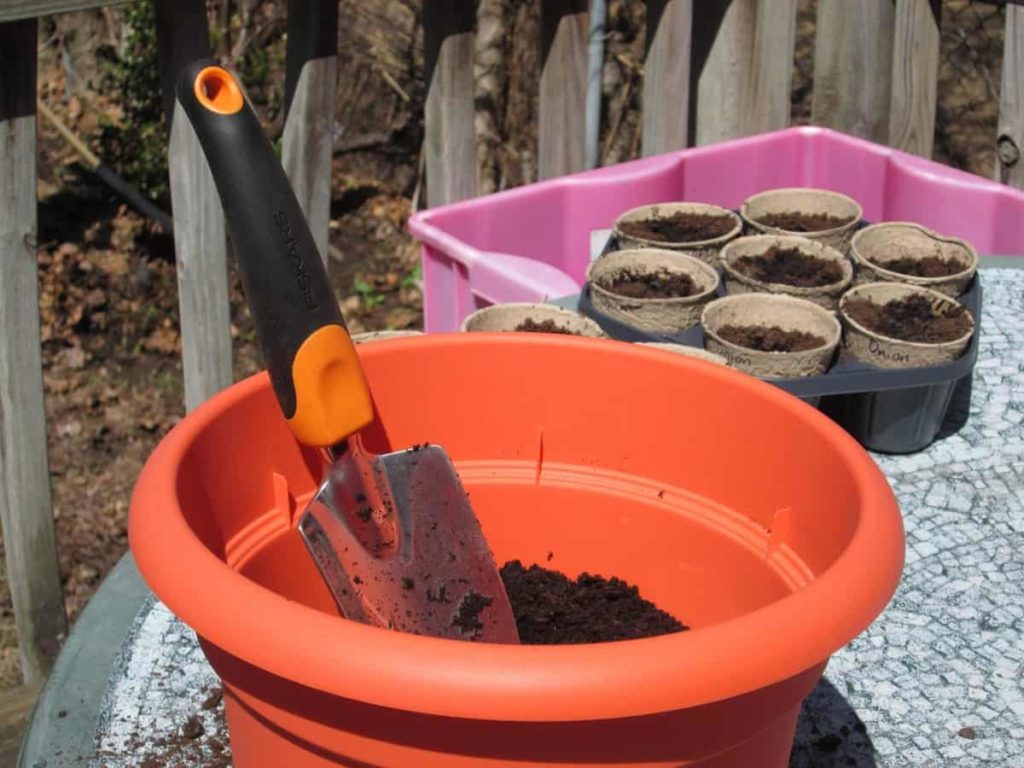
Consider your container crops’ demands and water requirements since many options are available. Perlite, sand, or bark-rich soils are ideal for perennials, herbs, and annual flowers. Tropical plants and leaves flourish in moist but not soggy and need more peat and less coarse materials. When you choose a high-quality medium, you can change the composition and texture to match the look and feel of your flowers.
Plant your container plants
Sow seeds at a depth twice as large as the seed’s diameter. Purchasing and handling transplants should only be done with healthy plants from a reputable supplier. On the other hand, tomatoes can be planted right up to the first leaves since their roots extend up the stem. If you’re planting a plant that isn’t cold hardy, wait until the threat of spring frost has gone.
Because they grow in various growth media, container plants may need more fertiliser than soil-grown plants. They are adding slow-release fertiliser once a year may be enough. If liquid fertiliser is used, fertiliser will need to be added about every three weeks, if not more often.
It is crucial to remember that containers have a significant risk of salt buildup. Rinsing the soil is an excellent way to “leach out” salts. Place the hose over the pot and let it flow for a while to clear the water. Every year, the salts need to be removed by a process known as leaching.
Temperature and lighting requirements
Every plant kept in a planter or container needs to be appropriate for the setting of the planter or container. The majority of plants need between six and eight hours of sunshine every day, although vegetables often do better with as least ten. Be careful to choose plants that can survive in the shadow of the soft of the container garden will be in such an environment. Many gardeners have a passion for tropical plants.
However, West Virginia’s temperature during the colder seasons does not support their growth. Therefore, you’ll need moveable planters that can be moved inside during the winter months for tropical plants. Heavy planters can be put on a dolly with wheels to be moved whenever necessary. Potted plants should also be kept a safe distance away from walls and kept off of roads and stone or cement patios during the warm months; otherwise, they run the risk of being scalded and overheated by the reflected heat off of these surfaces.
Watering your container plants
For container gardening, water is an essential factor. Potted plants lose moisture more quickly than those cultivated outside. So check your plants often to see whether they are getting enough water. Potted plants in sunny places may need daily or even twice-daily watering during hot, dry periods.
To ensure that moisture reaches the lowest sections of the container, the best technique is to feel the soil for dryness or moisture and water as required, watering until water flows out of drainage holes. Waterlogging can lead to root rot if drainage holes are clogged. Many self-watering containers are available, and you plan to make your own.
Fertilising requirements
If the soil mix already includes fertiliser, it is unlikely that any additions will be necessary for many weeks. At that time, annuals could benefit from extra fertilisers that encourage growth and blooming and are applied to the soil. However, be cautious not to over-fertilize your plants, whether you want to use compost tea that you created yourself or store-bought plant food. Excessive amounts might harm the plant and do more damage than benefit.
Growing vegetables in containers in Virginia
Growing various veggies in pots requires the same care and attention as growing other plants. Vine-bearing or fruit-bearing plants that need to be supported can have stakes, cages, or trellises added to their arrangements. Vegetables that mature rapidly, such as radishes, green onions, and leaf lettuce, can be picked often and replanted for many harvests. This allows for greater crop yields.
In case you missed it: New Jersey Container Gardening: How to Start with Vegetables, Fruits, Herbs, and Flowers
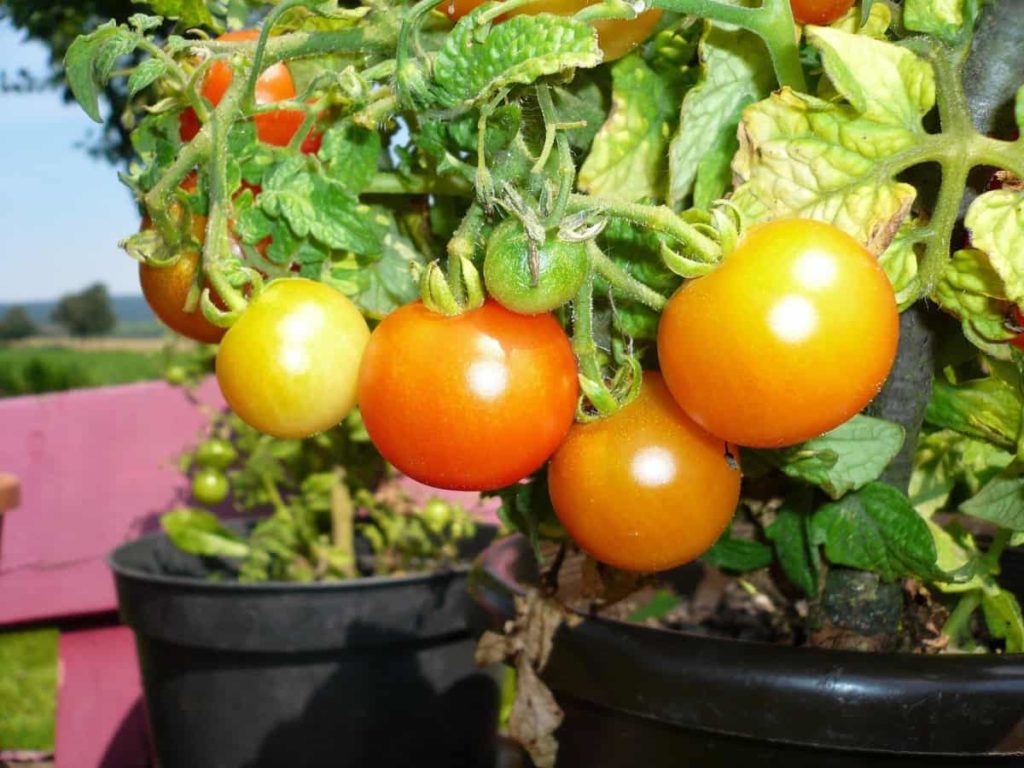
Bush beans: Roma, Derby, Kentucky Wonder, and Slenderette are among the bush bean types that can be grown effectively in Virginia. Growing bush beans in either a regular garden or a two-gallon pot is possible. After sowing, bush beans can be harvested 42 to 60 days later.
Asparagus: Asparagus grows, flowers, and blooms without much water, making it a summer crop. This works for dry and rainy summers. Asparagus is a year-round, low-maintenance vegetable. This vegetable can be grown in a container garden easily.
Cucumbers: Virginia cucumbers include Dasher, Everslice, Sweet Slice, and County Fair. 55-65 days after planting, fruits can be plucked. Dasher, Sweet Slice, and Everslice are wonderful varieties for fresh dining and salads. Cucumbers grow in five-gallon or bigger containers. Cucumber vines extend far and require plenty of room. Container-grown plants need a trellis or other support.
Radishes: Radishes need minimal water, sunshine, and pest management, like Carrots. It’s perfect for full- and partial-sun gardens. Radishes can endure frost and other cold conditions. You can sow, grow, and harvest radishes in spring, autumn, and winter. Radishes grow readily in pots with loamy, small-particle soil.
Eggplants: Eggplants love Virginia’s summer heat. Better if it’s hotter than usual Rain means larger, better eggplants. This is a critical component in growing eggplants in Virginia. There are around 20 eggplant varieties. You can choose the kind for your container and climate.
Growing fruits in containers in Virginia
When picking the finest fruit trees to grow in your yard, knowing which trees thrive in Virginia’s Grow Zones is essential. Discover the best fruit trees for Virginia in this section!
In case you missed it: Canada Container Gardening: How to Start with Vegetables, Fruits, Flowers, and Herbs

Apples: During Virginia’s spring and autumn, apple trees flourish. Contrary to popular belief, flowers and fruit can continue to develop until the late spring, irrespective of snow and frost. One of the simplest fruits to grow is an apple tree. It doesn’t need any fertiliser or water, can be grown in any soil and requires very little pruning. It’s also quite versatile. Using them in containers is a great idea.
Pears: Virginia pear trees are also cold-hardy. Pears bloom and produce fruit sooner than apple trees. Pear Trees are cold-hardy, drought-resistant, and heat- and humidity-tolerant. It can be planted anyplace in your yard, regardless of sunshine. Pear Trees can be planted in Virginia gardening pots.
Cherry: Cherries can be sweet for eating or sour for cooking. Sweet cherries grow best in open, sunny areas. Water cherry trees weekly with a full can in late spring and summer. Pruning is simple; trim down each branch by a few inches in July.
Figs: Several fig varieties make good potted fruit trees in warm climates. Containers encourage greater sweet, tawny fruit production. In the summer, flood the container weekly and feed Blood, Fish, and Bone. They’re robust growers, but you can trim them once they’ve fruited.
Citrus (oranges and lemons): In warmer climates, citrus fruits make the ideal potted fruit trees. Too-dry plants lose leaves—water when the compost seems dry, which might be every day in summer. Rainwater is preferable.
Growing herbs in containers in Virginia
Most herbs thrive in containers, whether they’re grown outside or indoors. In addition to being used in cooking, herbs can also be planted for their scent. Perennials don’t need yearly replanting; however, annuals require yearly replanting. If they aren’t grown inside, fragile herbs like rosemary and thyme may need to be replanted every year.
In case you missed it: Singapore Container Gardening: How to Start with Vegetables, Fruits, Herbs, and Flowers
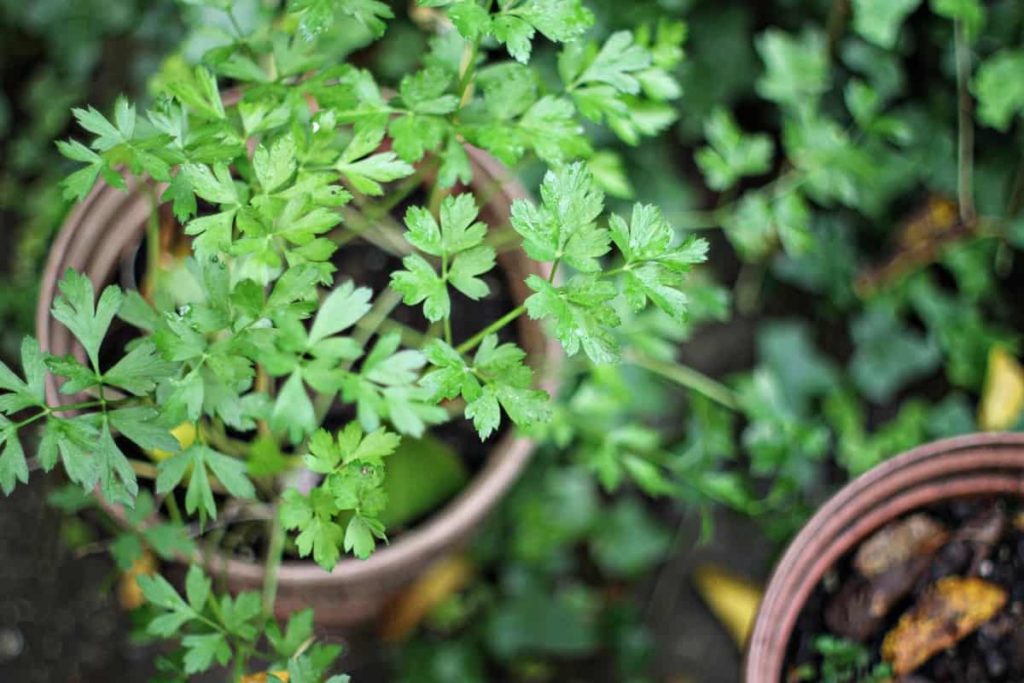
Basil: Basil grows well in containers and window boxes since it is a warm-weather annual herb. Many gardeners find it difficult to grow basil, but it’s typically a breeze if you give it well-drained soil and enough sunlight. In addition, Basil, like other herbs, thrives on regular picking and will continue to produce new growth even after it has been pruned. Therefore, it’s a good plant for a container.
Oregano: Put oregano in a pot, and you’ll have a simple and elegant technique to control its development in the garden. The little leaves are full of taste for pizza and bruschetta toppings and can also be used in vinaigrettes and marinades.
Rosemary: A potted rosemary plant can be brought inside in mid-autumn when the days get shorter and the nights become longer. Rosemary comes in a wide variety of forms and heights, with most cultivars growing upright, but a few do cascade, making them ideal for pots and planters at the base of their stems.
Thyme: As a low-maintenance, drought-resistant herb that can handle some negligence, thyme makes an excellent container plant. It’s also a perfect choice for the container. However, don’t overwater this drought-resistant plant since it favours dry soil.
Mint: Mint thrives in Virginia’s frigid temperatures, unlike several other plants. To get the best peas, you should plant them in the winter and early spring, when the weather is cooler. Mint is one of the simplest herbs to grow. When caring for this plant, you don’t need to fertilise it, water it very little, or trim it! Gardening pots are the finest place to grow mint.
Growing flowers in containers in Virginia
Perennials are an excellent option for busy Virginians since they need little to no effort from the homeowner. Most plants have a strong root system and are rarely attacked by pests. Plants should always be chosen according to the moisture and sunshine they get. Because Virginia’s growth zones range from 5 to 8, it’s critical to choose plants that will thrive in your particular environment.
In case you missed it: Texas Container Gardening: For Vegetables, Flowers, Herbs, and Fruits
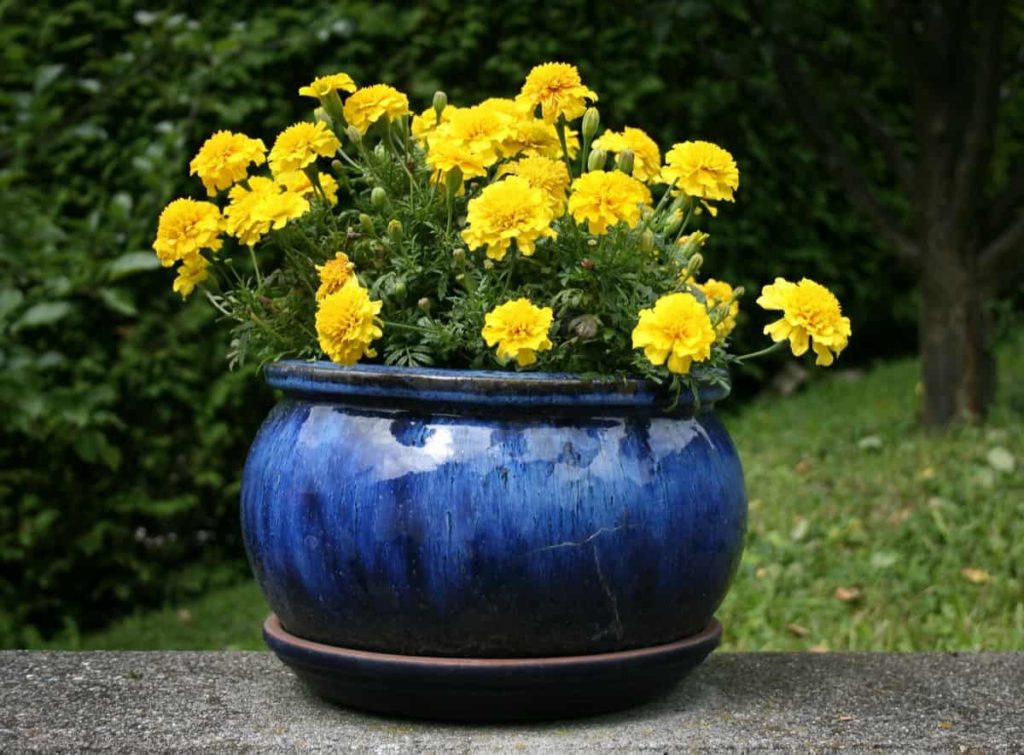
Butterfly weed: Butterfly weed might be an excellent option for a sunny, poor-soil location. Throughout the summer, upright flower stalks bear clusters of orange flowers. The lance-shaped leaves of this plant, which often reach a length of three feet, measure up to 2.5 inches wide. If you don’t remove the flowers off this plant, it may self-seed.
Eastern Bluestar: This plant can reach a height of three feet. Multi-stemmed clumps can be formed by using this option. Blue tubular flowers occur in loose clusters in the early spring and continue to bloom all season. The shape of each flower is a star. This plant thrives in containers and sandy soil and is well-suited to moist, shaded environments.
Blue wild indigo: The wild blue indigo can reach a height of 36 inches. Throughout the spring, this sun-loving plant is covered with flowers. Approximately 4- to 16-inches long, the leaves of this plant are separated into three sections. Despite its constant moisture requirement, this plant has strongly objected to standing in water.
Petunias: It is possible to get a good month or two of flowering time out of petunias in the summer, but they do best when warm weather. As the temperature rises, you’ll note that so do the number of flowers! Petunias are among the most simple flowers to grow. For additional blooms, they don’t need to be deadheaded. For pots, they are a great fit.
Daisies: Daisies are a wonderful flower to plant and then forget about. It is possible to enjoy this lovely flower year after year by planting bulbs in the autumn and genuine plants in the spring. More diseases and fungi are present in wet or cold weather. However, daisy plants can become infected with fungus and disease throughout the autumn, resulting in no flowers or even complete damage to the flower. In Virginia, they are wonderful for containers.
- How to Grow Hibiscus from Flower
- Plantation Ideas for Home Decoration: A Beginners Guide
- Flower Garden Designs and Layouts for Beginners
- Planting and Spacing Techniques in Papaya: A Beginner’s Guide
- Growing Gold: Essential Techniques for Planting Pineapples
- How to Make Kalanchoe Plant Bushy: Home Remedies and Solutions
- 11 Reasons Why Your Gardenia is Not Blooming: Home Remedies and Solutions
- Eco Elegance: The Guide to Designing a Drought-Tolerant Landscape
- Gardening on a Slope: Strategies for Hillside Landscaping
- Nourish and Flourish: Top Organic Mulches for Thriving House Plants
- Everything You Want to Know about Indian Mogra Flower: Discover Uses and Growing
- Green Thumb Success: Expert Tips for Cultivating Greenhouse Pumpkins All Year Round
- Maximize Growth & Flavor: The Ultimate Guide to Companion Planting in Herb Gardens
- How to Control Rhododendron Problems Naturally: Home Remedies and Organic Ways to Fix Them
- Natural Magic: The Remarkable Benefits of Cinnamon for Plants
- Best Steps to Revive Dying Tulip with Natural and Organic Treatment
- 10 Reasons Why Your Angel Trumpet is Not Blooming: Remedies and Treatment
- How to Fix Periwinkle Leaf and Flower-Related Problems: Natural Remedies and Solutions
- How to Fix Zinnias Leaf and Flower Problems: Discover Natural and Home Remedies
- Organic Steps to Induce Lemon Tree Flowers: A Comprehensive Guide
- Bloom Booster: Crafting the Perfect Homemade Bougainvillea Fertilizer
- Optimizing Growth: A Guide to Applying NPK Fertilizer for Potted Plants
- 10 Best Homemade Fertilizers for Rubber Plant: DIY Recipes and Application Method
- How to Boost Female Pumpkin Flowers: Effective Steps for More Flowers and High Yields
- Transform Your Indoor Garden: Top Benefits of Pink Salt for Houseplants
- 10 Best Homemade Fertilizers for Peacock Plants (Calathea): Easy DIY Guide
- Unlock Blooms: 9 Reasons Why Your Potted Chrysanthemum is Not Blooming
- 8 Reasons Why Your Potted Hibiscus is Not Blooming: Fix it with Simple Solutions
- Unlock Blooms: 9 Key Reasons Your Potted Frangipani Won’t Flower
- 10 Reasons Why Is My Ice Plant Not Blooming: Remedies and Treatment
- 10 Reasons Why My Potted Hydrangea Not Blooming: Treatment and Remedies
- 10 Reasons Why is My Wisteria Not Blooming: Remedies and Treatment
- 10 Reasons Why is My Goldfish Plant Not Blooming: Remedies and Treatment
- Maximize Your Space: Ultimate Guide to Balcony Gardening with Grow Bags
- 10 Reasons Why Your Iris is Not Blooming: Remedies and Treatment
- 10 Reasons Why Your Anthurium Plant is Not Blooming: Treatment and Remedies